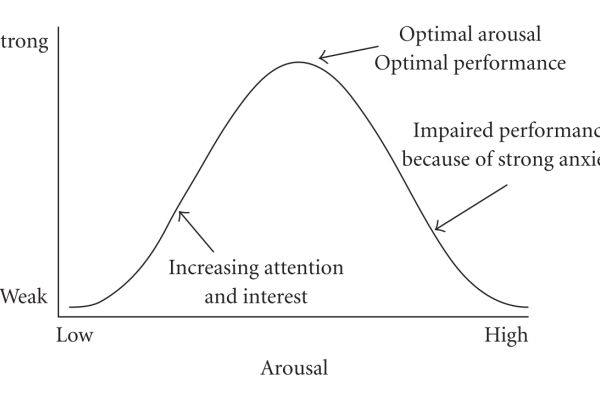
Imagination
Albert Einstein famously said, “Imagination is more important than knowledge. For knowledge is limited to all we now know and understand, while imagination embraces the entire world, and all there ever will be to know and understand.” Through imagination, people can explore ideas of things that are not physically present, ranging from the familiar (e.g., a thick slice of chocolate cake) to the never-before-experienced (e.g., an alien spacecraft appearing in the sky).

Unlike perception, imagination is not dependent on external sensory information taken from what a person can see, hear, feel, taste, or touch in the moment. Rather, it’s generated from within and often unconsciously influenced by memories and feelings. Humans use imagination for a variety of reasons: to acquire experience and knowledge about the world, to better understand another person’s perspective, to solve problems, to create and interact with artistic works, and more. Imagination tends to go hand-in-hand with creativity and plays a pivotal role in the different stages of development.
Daydreaming (or mind-wandering) is an information-processing state that combines knowledge and imagination, the dynamic duo. Being more imaginative allows a person to make creative connections and inferences using their past experience and knowledge base. As a result, research indicates that more robust daydreaming is associated with superior intelligence.
For the most part, having an imagination is hugely beneficial to your life, lending you greater perspective and helping you achieve lofty goals. However, imagination can be harmful in those rare instances where imagination is mistaken for perception. This can occur whenever someone struggles with mentalization or the ability to differentiate between what’s real and what’s made up in their mind. A lack of mentalization can lead a person to react to an imagined fear (e.g., that the plane they’re in is going to crash) as if it’s real, frequently leading to great stress, anxiety, fear, and trauma.
Your imagination is full of potential just waiting to be tapped. There are many ways to jumpstart your imagination. Deliberately change your self-perception through tools like positive affirmations. Put on your observation hat and use all your senses to pay attention to what’s going on around you. Try closing your eyes for a few minutes and reliving a pleasant memory. Open yourself up to possibility by asking what would happen if you said “yes” to opportunity instead of “no.” Be curious and playful. Spend some more time in nature.

Imagination can be a powerful tool in psychology. Many people deliberately use mental imagery to visualize desired outcomes (e.g., like winning a competition), process past experiences, manage difficult emotions, or relax the mind and body (as in meditation). There is a strong if not entirely understood connection between the mind and the body. Trained mental health professionals may employ imagination in the form of guided therapeutic imagery to help patients address a number of concerns, including grief, depression, stress and anxiety, substance use issues, relationship problems, family and parenting concerns, and PTSD.
Daydreaming is often dismissed as a useless waste of time, but dreams of glory can actually boost creativity and self-control. It occurs when the executive attention network and the default mode network collaborate together. Daydreaming allows people to shut out their external environment and clarify positive, long-term goals towards which they can then work. Visualizing their future self can motivate them to take the necessary steps to hone their skills and achieve success.
Many people suffer from crippling fear that negatively impacts their day-to-day functioning. Since the 1950s, exposure therapy has been prescribed to expose these individuals to their fears in manageable doses until they gain control over their body’s fear response. In some cases, exposure therapy is not possible (e.g., it costs too much or other practical limitations) or not desirable, and imagining exposure can actually bring about many of the same benefits as actual exposure to the threatening stimulus. In essence, a vivid imagination can help people unlearn fear.
After a traumatic experience, it’s easy to get stuck in negativity, ruminating again and again over the painful memory of what happened. Imagination can provide an escape—a way of looking beyond what is to what could be. Imagining new narratives, particularly with the help of a mental health professional, can help a person move away from distress and towards healing. Through imagination, they can recover a sense of personal agency and feel more empowered after a life crisis.
Evidence shows that our memories are not static recordings of actual events; in fact, they’re proven to change with each retelling. This can either be adaptive, as in the case of personal trauma, or dangerous, as when dealing with law and crime. For example, eyewitness imagination can change memories—most often unconsciously—in the direction of personal beliefs, a fact that should be given more consideration in legal proceedings.

Children can benefit greatly from a vivid imagination, especially with the support of key adult figures in their lives, such as parents and teachers. Imagination plays a critical role in early development, increasing children’s cognitive, creative, and social skills. Imaginative children can explore their thoughts and feelings more deeply and learn how to solve problems creatively. They can put these lessons to good use as they build friendships and pursue personal goals.
Pretend play or make-believe consists of a few key components. One is object substitution, which can involve either pretending an object is something else (e.g., a banana becomes a telephone) or using an imaginary object. A child may also attribute pretend properties to an object (e.g., making a stuffed animal “talk”). Imaginative play can include social interactions, either with peers or adults. A child may also role-play or act as if they are someone else (like a celebrity), either with or without props. Imaginative play often involves metacommunication, such as discussing who will be playing what role and how the story will go.
There is a great need for pretend play in child development. Fantasy and make-believe can teach children crucial social skills, such as communication, empathy, perspective-taking, and problem-solving. Imaginative playing can encourage curiosity and creativity, often leading to more success in school. Parents can help encourage their child’s imagination by reading to them at bedtime and having regular discussions about topics like nature and social issues.
Many healthy children create imaginary friends that they eventually outgrow. Children that are more fantasy-prone tend to be outgoing, creative, and adept at seeing things from other people’s perspectives. Children may also express their own thoughts and feelings through an imaginary friend, giving their parents greater insight into their inner world. Imaginary friends can teach kids a great deal about the possibilities of fiction that may benefit them as adults.














